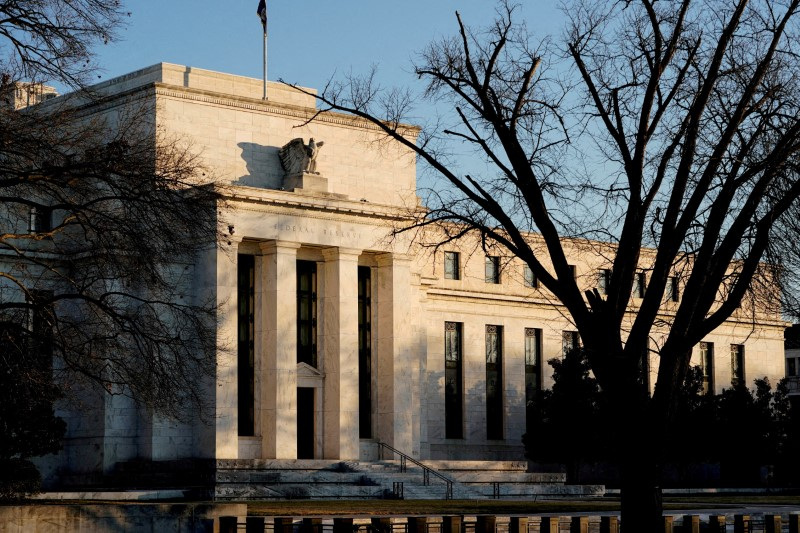PALO ALTO, California (Reuters) - The U.S. Federal Reserve should beef up its quarterly "dot plot" of policymakers' interest-rate-path views by including the individual economic expectations that inform each one, Austan Goolsbee, president of the Chicago Fed, said on Friday.
The dot plot, published every three months since 2012, is a graph depicting where each of the 19 U.S. central bankers expect the Fed's policy rate to be at the end of each of the next few years.
The latest one, published in March, shows the median Fed policymaker expected to need to cut short-term borrowing costs three times by the end of this year, though nearly half saw fewer rate cuts, and several saw just one rate cut or none.
But in its current form, Goolsbee said in remarks prepared for delivery to a conference on monetary policy at Stanford University's Hoover Institution, "the dot plot is just a collection of opinions without economic content."
It's impossible to know, for instance, if a policymaker who writes down fewer rate cuts this year fears the economy is overheating, or simply believes the economy has the capacity to grow faster and therefore can tolerate higher rates.
The goal of Fed communications, Goolsbee said, should be to lay out the rationale for policy decisions, and the dot plot falls short.
"Because it can’t be connected to the economic conditions the participant thinks will justify that interest rate, there is nothing to tell us why they think this a reasonable choice," he said. "A matrix that anonymously matches the economic forecasts to the rate path for each participant would answer some important questions."
His remarks come after European Central Bank board member Isabel Schnabel floated the idea of publishing an ECB "dot plot," and as the Fed itself prepares for a review of its own policy framework, expected to begin later this year.

Goolsbee did not offer his own rate-path view, or explain the economic assumptions that underlie it.
Earlier in the day Goolsbee said that recent cooling in the U.S. labor market gave him added confidence the economy is not overheating.